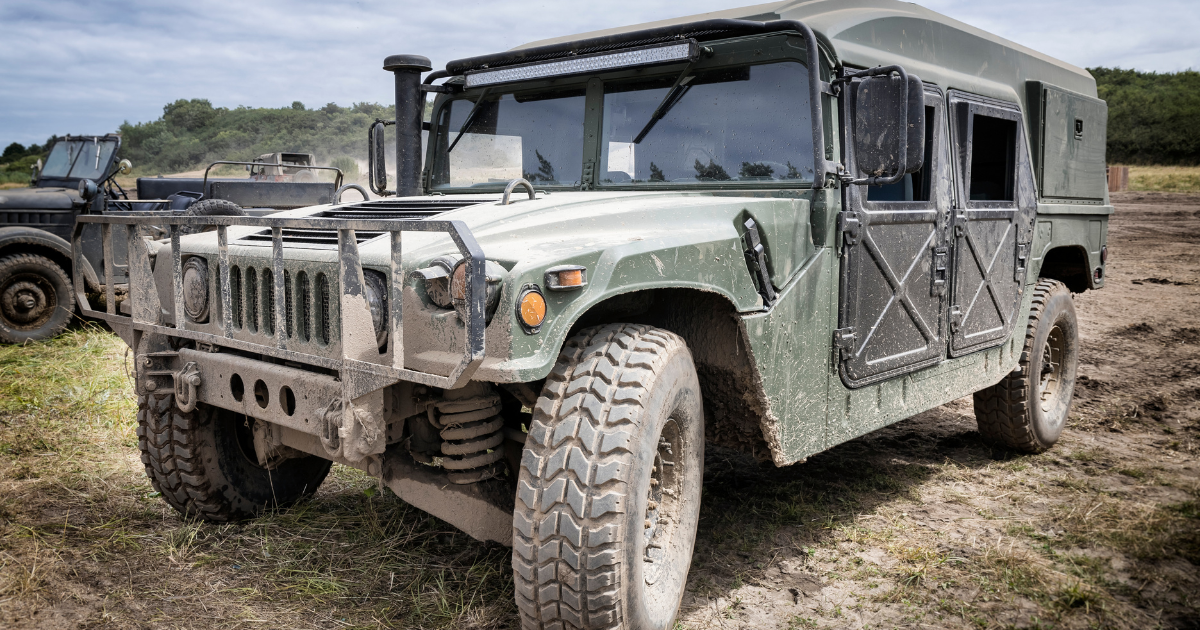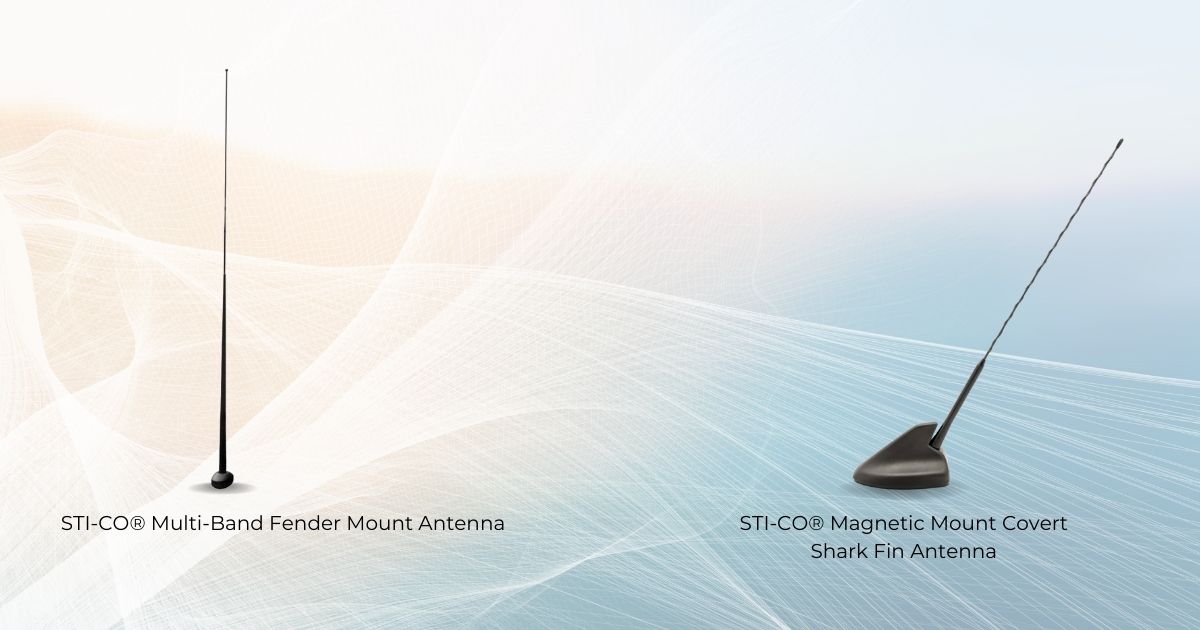Field Agent’s Buyer’s Guide for Covert Antennas
Posted by STI-CO® ANTENNA SOLUTIONS on 6th Jul 2023
Choosing the Right Covert Antenna for Your Needs
Field agents and security professionals depend on high quality performance and technology for uninterrupted radio communication, which enables them to remain undetected in dangerous or sensitive situations. In this blog, you’ll be able to learn about the different types of covert antennas, their applications, and how to choose the right antenna for your purpose.
Types of Covert Antennas
At the most basic level, covert antennas allow your security or surveillance vehicle to blend in with others on the road. The various styles of covert antennas used to help cars and trucks remain undetected fall into two broad categories: standard roof mount antennas and concealed mount antennas.
Standard Roof Mount Antennas
The principle behind the standard roof mount is to ensure that the antenna blends seamlessly with the vehicle's design, giving the impression that it is an original factory component. This method of concealment is widely used and highly effective. Roof-mounted antennas can be installed permanently or attached using magnetic mounts, providing flexibility for users to install or remove the antenna as required.
Concealed Mount Antennas
Several mounting styles are available for covert antennas, which serve to disguise or completely conceal the antenna:
- Lookalike antenna: This type of antenna is designed to resemble an accessory that can be attached to the vehicle's exterior, creating the illusion of an aftermarket add-on.
- Bumper mounted antenna.
- Completely concealed antenna: This antenna is hidden within the vehicle, typically installed under the headliner or in various other attachment areas.
- Patch antenna: This style is primarily designed for concealment and is less commonly used, but it serves specific applications.
- Glass mount: This type of antenna utilizes a sticky mounting mechanism on the inside of the vehicle's glass. While it offers somewhat less concealment compared to other types and utilizes older technology, there are specific use cases where it remains suitable.
What to consider when choosing the best covert antenna for a specific operation or environment
To make the appropriate choice of a covert antenna for a specific application or setting, it is crucial to balance various performance and design factors.
Frequency Range
The frequency range needed will determine the options available to you. Different antenna models have limitations in different frequency ranges.
Power Rating
The power rating needed for your radio transmission will affect your antenna selection. Certain antennas have higher power ratings than others. If your requirement is to communicate over long distances, then a higher power rating will provide better performance for your application.
Form Factors
The physical size and shape of the covert antenna are aspects to consider. This includes the appearance of the antenna, how it can be concealed, and where it mounts on the vehicle.
Vehicle Constraints
The make, model and year of the vehicle where the antenna will be installed present a variety of constraints in relationship to mounting the antenna. For example, not all late model vehicles have fender-mounted antennas, magnetic mounts won’t work with aluminum body vehicles. New EVs often have glass roofs, which limits the mounting options on these vehicles.
Working Environment
The physical environment where the vehicle will operate also makes a difference to the range and signal quality. Obstructions in the environment, mountains, buildings, and other types of interference will have an effect on the performance to be expected.
Range and Signal Quality
Combining with the other design factors, the range and signal quality needed for your particular use case based on the vehicle and application need to be considered. As you evaluate the antenna design and performance parameters, it may help to review the characteristics that go into making a high quality antenna.
Optimizing Your Covert Antenna’s Signal Quality and Range
One of the key elements that affects the signal quality and range of a covert antenna is its placement on the vehicle, as well as selection of the right antenna for your purpose. We use a system to rank antenna performance, designating green, yellow and red zones.
- Green zone – offers the highest performance and range, with easy installation and the fewest obstructions.
- Yellow zone – second tier performance, some obstructions and semi-covert installation, also ebay to install.
- Red zone – lower signal quality to be expected. This is as a result of its very covert installation with higher interference from the body of the vehicle. This may be appropriate for use in the city where vehicle to vehicle communication is needed as opposed to a longer range signal.
Several other factors that affect signal quality and range include the following:
- Antennas need a ground plane in order to function correctly; for the upper VHF and UHF ranges, the metal skin of the car serves this purpose.
- Signal interference can be caused by nearby electrical devices or physical obstacles such as mountains, buildings, or any other object or device that could disrupt the signal. Checking for proper cable quality and connector installation can help minimize loss and lead to better antenna performance.
- Antenna tuning also has an effect. Superband antennas are made to operate on a wide frequency range depending on the radio. However, if your need is for a specific frequency, then you’ll find that designing for that particular frequency will lead to more optimized performance and better results.
- The physical placement of the antenna should balance performance and stealth requirements. A roof mount antenna in the optimal location, with an OEM appearance, can provide coverage and remain undetectable.
- Placement inside the vehicle or under the body offer maximum concealment, but there will be some trade-off in performance.
Ultimately, your choice will depend upon your needs and the characteristics of the vehicle in which the antenna will be installed.
Minimizing Chances of Detection
Field agents understand that maintaining vehicle stealth goes beyond choosing the right covert antennas. In certain scenarios, individuals with keen observation skills can detect other vehicle characteristics, such as wheels or structural elements, that may reveal its use for surveillance or specialized operations.
Roof mount and fender mount antennas, utilizing OEM components for concealment, enable seamless integration with vehicles while ensuring effective communication coverage. Concealed mounting options, whether inside the vehicle or under the body, enhance the difficulty of detection.
Additionally, it is crucial to integrate the antennas into your comprehensive communications system and conduct thorough placement and coverage testing before field deployment.
Summary
When you’re looking for covert antennas, you have a wide range of possibilities to consider. Roof- and fender-mounted options give the appearance of OEM antennas, but provide full radio communications performance. Depending on the demands of your operation. you may opt to sacrifice a certain level of performance in favor of enhanced concealment provided by antennas mounted under the bumper, on the glass, or within the headliner.
Choosing the best antenna for your application involves finding the right balance between concealment requirements and the need for excellent range and signal quality over varying distances.
Are you interested in learning more about covert antenna solutions? Get support from one of our dedicated team members by calling 866-307-8426. You can also reach via email at sales@sti-co.com or access additional resources by visiting www.sti-co.com.



